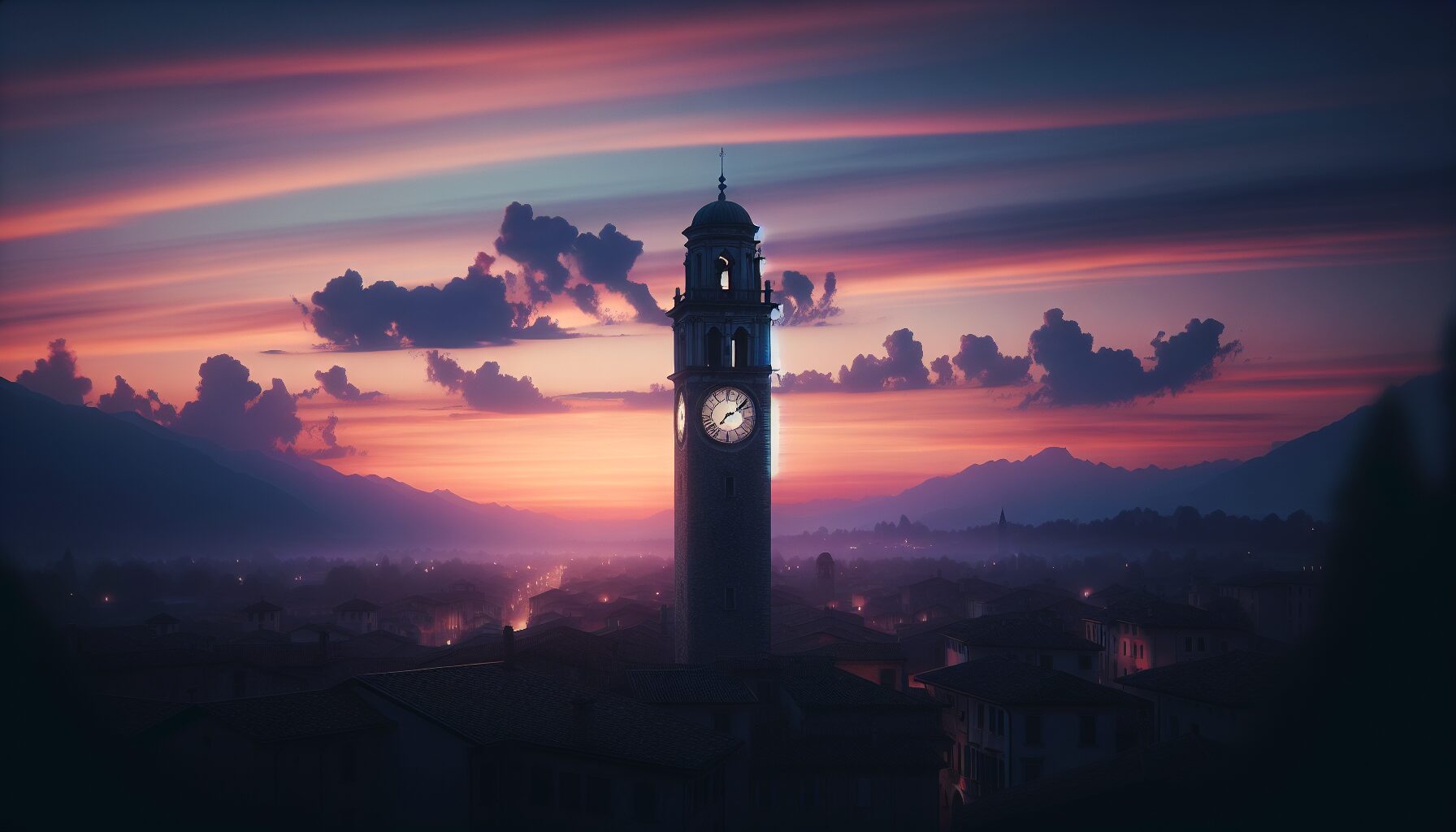Dusk is a time of transformation and reflection, where day meets night. It is during these moments, particularly from the vantage point of a clocktower, that we begin to see the world under a different light—literally and metaphorically. Observing the clocktower at dusk allows us to appreciate the rich interplay between architecture, history, and the natural transition of time.
A Beacon of History
Clocktowers have long been central to urban landscapes, serving as both timekeepers and landmarks. The genesis of these structures dates back to medieval times when they were built to regulate the commercial and social activities of bustling towns. As historian Gerhard Dohrn-van Rossum notes in his work, History of the Hour, “The presence of a mechanical clock represented the burgeoning concept of measured time as a public necessity rather than a private indulgence” (Cambridge University Press).
At dusk, as the dim light bathes these towering structures, they evoke a sense of continuity through the ages. They stand as sentinels of time, observing the ebb and flow of life around them.
Liminality: The Twilight Zone
The term “liminal” stems from the Latin limen, meaning “threshold.” Twilights, both dawn and dusk, are naturally liminal, marking the transition from night to day or vice versa. Clocktowers, often central in our towns and cities, make perfect observation posts for these transitions. The interplay of shadows and light reflected off their faces can serve as metaphors for life’s uncertainties and the delicate balance between past and future.
“Liminal spaces are where transformation occurs, where the old is absorbed and the new takes shape.”
— Victor Turner, anthropologist
From the elevated platform of a clocktower, one witnesses more than the shift of sunlight; there is an intangible shift in the atmosphere, mood, and even sound. The bustle of the day begins to quieten, and the whispers of the night start to emerge.
The Aesthetic Allure of Dusk
Dusk is often revered for its aesthetic beauty—an ephemeral spectacle painted with the hues of orange, pink, and purple. Renowned author Ruskin Bond captures this magic in his short story collection, Dust on the Mountain: “There’s a certain magic that descends with twilight, and the colors in the sky are just a theatrical display of nature’s art” (<?penguin.co.in).
The clocktower, silhouetted against this backdrop, becomes a striking piece of art itself. The shadows it casts stretch outwards, creating shapes that dance upon the streets and rooftops, inviting contemplation and imagination.
Symbolism and Reflection
Clocktowers symbolize many things—order, civilization, and the human attempt to reign in and understand time. Observing them at dusk brings a particular intimacy to these symbols, reminding us of our place in the natural cycle of things.
Dusk is synonymous with reflection, a natural pause where observers are prompted to look back on the day and look ahead to the uncertainties of the night. It is a time to ponder our achievements, confess our shortcomings, and reset our inner clocks in preparation for a new day. Watching a clocktower at this hour underlines these reflections, lending a rhythmic heartbeat to our thoughts.
A Call to Experience
For those fortunate enough to live near a clocktower, an observatory session at dusk is a recommended experience. It is an opportunity to reconnect with the rhythm and pulse of a city or town and to observe a living symbol of time’s passage as it keeps tick-tocking through the centuries while quiet moments linger.
The phenomenon of dusk, when viewed from the unique vantage of a clocktower, is more than just an aesthetic experience; it is a spiritual one, an invitation to embrace the unknown and cherish the timeless art of observation.
In a world that is increasingly dictated by digital clocks and fleeting moments, let us take a moment, just once, to climb the steps of a clocktower at dusk. There, as shadows lengthen and the world pauses, we might find clarity within the chaos and serenity in the passing of time.

Comments